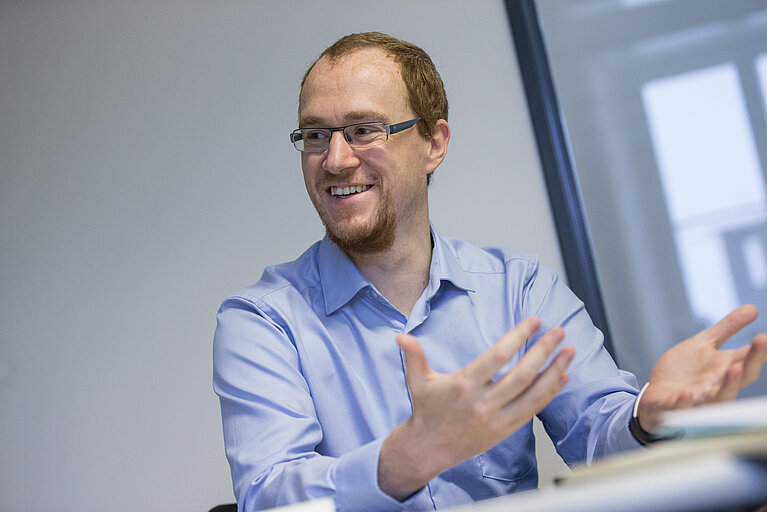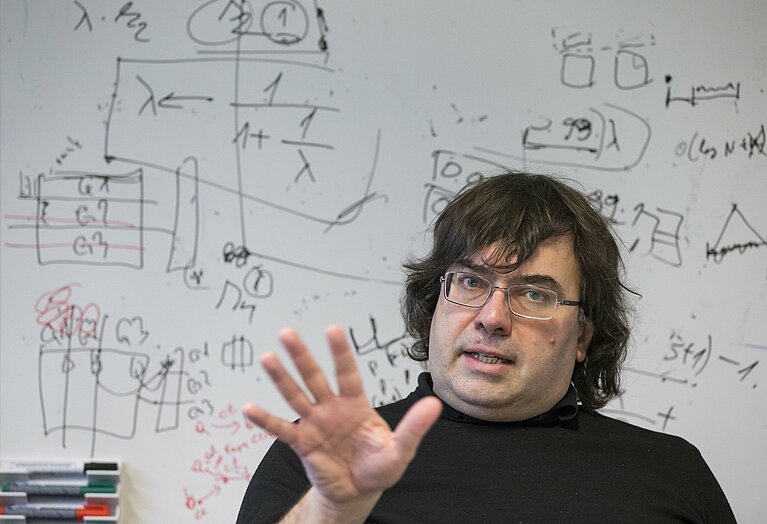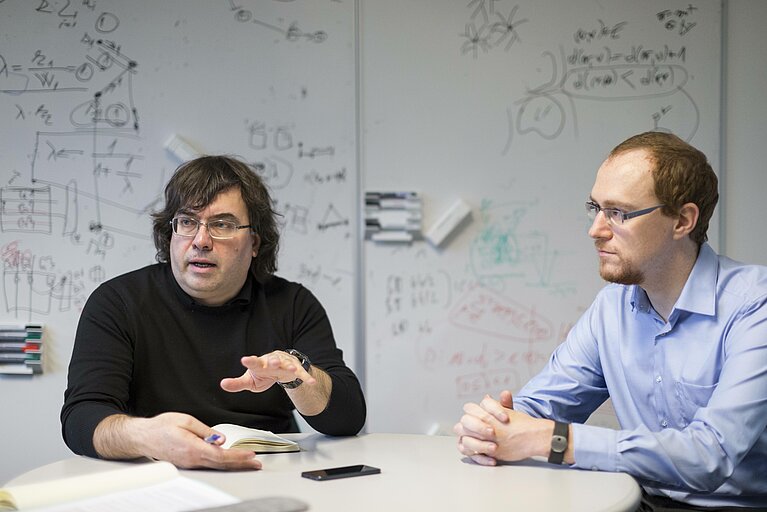March 23, 2016 - by Simone Ulmer
This year, PASC will hold its 3rd conference. The Association for Computing Machinery (ACM) is now a co-sponsor of the conference. What does this mean for the event?
Torsten Hoefler: It basically means that PASC16 has been endorsed by one of the big professional associations in computer science. The endorsement is a sign of the importance of the conference for the ACM. In fact, as a member of the executive committee of SIGHPC, the sponsoring special interest group within the ACM, I can say that it is thrilled to have PASC16 as an interdisciplinary conference within the umbrella of ACM events.
Why are they thrilled?
Hoefler: Because PASC16 is not a computer science conference in the traditional sense. It is a computational science conference combining several domains such as climate, engineering, mathematics and earth sciences. The idea behind this is that all these domains use computer science techniques to solve their simulation problems. Put simply, all of them use computers and high-performance computing machines, meaning that the ACM’s SIGHPC is a very fitting home for PASC. SIGHPC is also sponsoring the international Supercomputing Conference in the US, which is one of the conferences that inspired us in the organization of PASC16. But the PASC16 Conference focuses more on computational science and its applications, as you can see in the PASC16 application tracks. The most significant side effect is that all papers published at the conference will be made available in the ACM digital library, which has strict quality controls.
Prof Hoefler, you are Co-chair of the technical papers committee. Do you already see an impact of the ACM's co-sponsoring on the papers submitted?
In traditional domain sciences, researchers usually publish papers in journals and later present their results at various get-togethers. As opposed to computer science, conferences themselves do usually not primarily act as a publication venue. I don’t want to argue that the conference publication model is better than the journal model or vice versa. PASC16 defines a new publishing flow, which bridges these two worlds. We established a review process that is similar to a journal but has a fixed timeline. This makes publication faster than a classic journal, while allowing revisions as we know them from journals in a synchronized process towards the actual meeting. So far, we have received 45 very good submissions. What I can see from the first round of reviews is that there are top class publications, which we will be very proud to see at the conference.
What are the main topics of this year’s PASC Conference?
Nicola Marzari: The conference is typically organised around the core thematic areas of the PASC initiative: climate and weather, computer science and mathematics, engineering, life sciences, materials, physics, and solid earth dynamics, but it's also supplemented by an “emerging domain” topic. This year the focus is on high-performance computing and big data. The strength and uniqueness of the PASC Conference lies in its multidisciplinarity, where all these different fields come together in the same place and researchers realise that they're really driven by similar challenges in computational science. This means there's a lot of cross-cultural fertilisation between experts in all these domains.
Hoefler: I looked at all of the papers and you can clearly see this interesting mix of cultures in the publications – it is absolutely amazing. Just to name one example from my area, we have a computer science paper that uses principles from physics to make computer science more rigorous in a statistical sense. I am sure this cross-cultural fertilisation will create new ideas and insights.
Prof Marzari, you are Co-chair of the scientific committee. Are you satisfied with the mini-symposia that have been submitted?
I'm very happy! I think the mini-symposia have been extremely successful - not only we have seen submissions of very high quality, but we have also filled up very quickly the slots for the invited talks, with a majority of international contributions. In turn, this will help broaden our audience not only across Europe, but also in the United States and Asia.
Is it different than former PASC conferences?
Marzari: The series is growing rapidly. We started well, and precisely because PASC14 and PASC15 were so interesting and successful we are moving along a very healthy trajectory.
Why can the participants in Lausanne expect an exciting and high-quality conference?
Marzari: The plenary keynote talks are one of the most enjoyable and successful elements of the conference. These showcase in an impressive manner the state of the art in computational modelling – from the birth of the universe to climate change, from computer graphics to new materials for energy. I think it’s exactly at the PASC conferences that we see how these speakers can stimulate a very diverse audience, where all of a sudden scientists learn about the state of the art in a different field and understand how it relates to their research. There are only very few opportunities to do this at conferences, and I think this is the real strength of the PASC series, and a distinguishing trait of excellent computational science.
Hoefler: I can only re-emphasise what Nicola said. The plenary keynote talks have showcased international excellence from very different areas driven by the common use of computational techniques. For example, last year at ETH Zurich we had Thomas Sargent from the University of New York, a Nobel Laureate of economics, talking about his computational studies simulating entire large-scale economies. It was extremely interesting to see how a field that, at first sight, seems far away from computing can benefit from all the progress made in computational science, and to learn what important role computers play in economics research.
How do you see the future of HPC and what will be the major challenges and problems to solve in HPC in the coming years? How can the PASC and PASC Conference contribute to solving these problems?
Marzari: What is becoming more and more challenging is that the advances in hardware, in hardware architectures and even in our software models are so rapid that it’s becoming impossible to have a single researcher at the forefront of the intellectual, numerical and algorithmic advances in a particular field. For example, we need cooperative efforts to take advantage of the new, very powerful hardware architectures that are becoming available. This is one of the goals of the broader PASC initiative: to embed into individual research groups new application-support specialists that are experts in hardware and software techniques, to push the optimal use of the hardware. By being embedded in a research group they become a point of contact between the numerical and the algorithmic or theoretical advances, and help deliver optimal implementations on new hardware platforms.
Hoefler: And at the same time the intellectual advances do not just happen in the science area, but also in the computer science part of HPC. After all, let me re-emphasise that HPC actually plays an important role as the Formula One of computing. Many technologies that I today have in my laptop and mobile phone were pioneered in HPC. For example, vectorisation and technologies like GPUs for general purpose graphic processing. As such, as we progress, we will develop more and more of these techniques and technologies and test-drive them in HPC. For example, heterogeneous memories are now becoming available in HPC, and I'm sure we will have them in our mobile phones within the next decade. The field is now moving incredibly fast, often spearheaded by HPC.
So what do you think will be important for the future of HPC?
Hoefler: Running a large scale supercomputer is incredibly complex, because the machines we have today have ten to twenty kinds of different memories as well as different processors and accelerators. We have to make sure we map applications efficiently to these complex architectures. For a domain scientist, whose job is to advance domain science, it makes absolutely no sense to understand the architecture in great detail. I would even say there are three layers in computational science: domain science, mathematics, and computer science as represented by HPC. Each of these layers has their own experts. And as Nicola mentioned the PASC initiative and the PASC16 Conference are effective in bringing these experts together in one room to work on the same projects and enable the next big leap. This is at the forefront of a global trend to integrate these different fields in the same teams.
Marzari: There is indeed this emerging field of big data, and in many domains we have just started to learn how to deal not only with the data, but with our entire infrastructure requirements to perform, archive and search very large numbers of calculations. Until recently everyone was focusing on a few high-profile calculations, and then moved on. Now, there's a complementary perspective where we run hundreds of thousands of simulations all testing subtle variations of a hypothesis. I often say that we’ll reach exascale computing by combining HPC and HTC - high-performance and high-throughput computing. For example, in our field of materials, we are now thinking about how to archive and share all our calculations and data in ways that make them accessible to any other researcher.
What are your personal expectations for PASC16?
Marzari: I'm looking very much forward to the conference. As I said, it's immensely enjoyable precisely because it pushes all of us outside of the comfort zone of our own domain and forces us to learn from colleagues in very different fields, but with similar challenges. The conference has been growing very rapidly, and I expect this latest edition to be even more successful in terms of attendees than the previous one.
Hoefler: I expect to learn a lot in the different fields and to meet old friends and make new ones. This has always been the case in the past. The PASC Conference should not be perceived as a domestic Swiss event, as it is really more of a European and international event – and we are planning to move to locations outside Switzerland.
About the PASC Conference
The PASC16 Conference, co-sponsored by the Association for Computing Machinery (ACM) and the Swiss National Supercomputing Centre (CSCS), will be held from 8 to 10 June 2016 at EPFL in Lausanne, Switzerland. The interdisciplinary conference brings together researchers across the areas of computational science, high-performance computing and various domain sciences. PASC16 builds on a successful history with 350 international attendees in 2015. This year, the PASC Conference is continuing to expand its programme and welcomes your participation in a substantially larger event. Further information: www.pasc16.org and www.pasc-conference.org.
About the PASC initiative
The PASC initiative is coordinated by the Università della Svizzera italiana (USI) in collaboration with CSCS, the Swiss National Supercomputing Centre of ETH Zurich, and with other Swiss universities and EPF Lausanne. The platform’s overarching goal is to position Swiss computational sciences in the emerging exascale era. It is complementary to the supercomputing hardware-focused elements of the Swiss High-Performance and Networking (HPCN) initiative. The PASC consolidates and builds on the achievements of the current High-Performance and High-Productivity Computing (HP2C) project, which supported 13 large-scale projects in the period from 2009 to 2013. The PASC aims to promote joint efforts to address key scientific issues in different domain sciences through interdisciplinary collaborations between domain scientists, computational scientists, software developers, computing centres and hardware developers. As such, the PASC builds on the principle of co-design, i.e. software codes exploiting the potential of the next generation of computing architectures need to be jointly and interactively developed by these actors along the entire value-added chain. Further information: www.pasc-ch.org.


